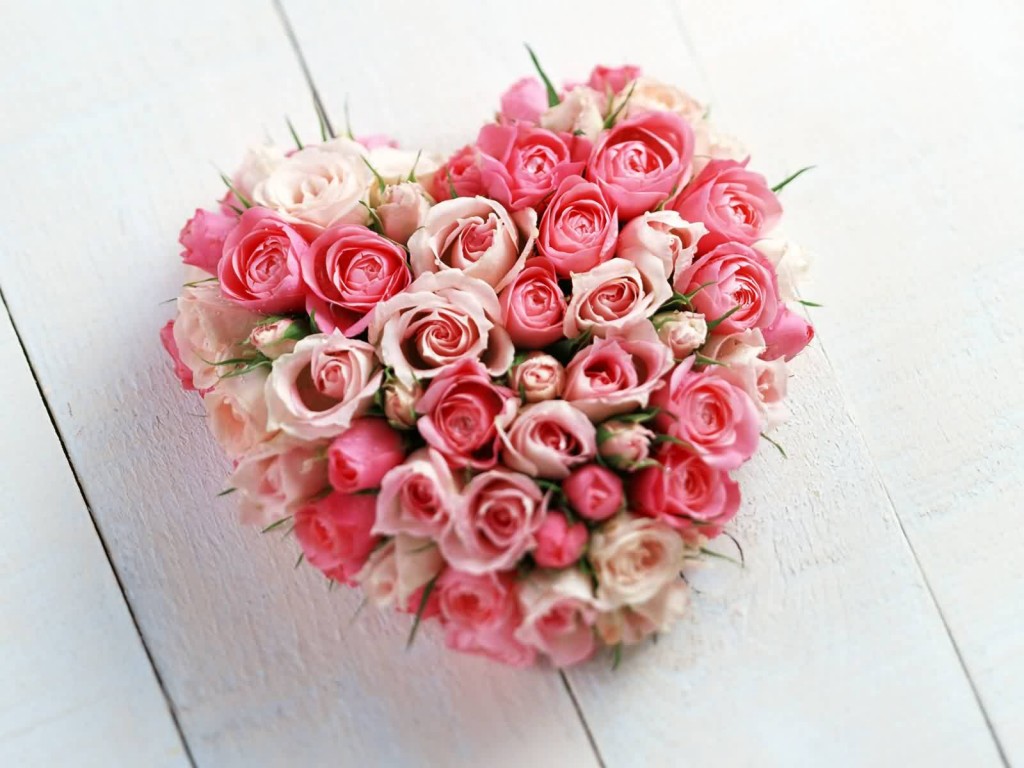 |
THE STORY OF SAINT VALENTINE
Although the origins of Valentine’s Day are shrouded in mystery, many believe it can be traced back to the Ancient World. It is not certain which of three Saint Valentines the day actually honours, but it is often associated with the story of a young priest living in the Roman Empire. He became famous for continuing to secretly marry young lovers, even though Emperor Claudius II had forbidden younger citizens from marrying. When news of Valentine spread, he was jailed and sentenced to death. While imprisoned, he fell in love with the jailer’s daughter. Legend has it that, on the night of his execution, he handed her a love letter, signed ‘from your Valentine’.
Valentine’s Day is celebrated at a time of year that is associated with love and fertility in pagan religions, and brides in Ancient Rome wore wreaths of picked flowers and also herbs to symbolize the same. Other flowers associated with various types of love include tulips, roses, primrose, purple lilac, jasmine, aster and balsam.
|
White Chocolate, Pistachio and Rosewater Cupcakes
Here is a the recipe for what I think are the the most delicious cupcakes I've ever tasted. White chocolate, pistachio and rosewater flavoured cake with white chocolate icing sprinkled with pistachio and rose turkish delight. Epic. Amazing when I ate it just freshly baked and decorated. I was blown away, I rate it my best cupcake ever. It was originally found in the New Zealand Woman’s Weekly magazine.
This recipe makes 24 cupcakes
Ingredients
190g butter
115g white chocolate
1 1/2 cups caster sugar
2/3 cup milk
1 cup plain flour
2/3 cup self raising flour
1/2 tsp vanilla bean paste
1 to 2 eggs, lightly beaten ( I used 2)
80g roasted unsalted pistachios finely ground
2 tbsp rose water essence
Topping
115g white chocolate melted
6 cubes of turkish delight diced in to smaller pieces
Extra pistachios, chopped
Method
Preheat oven to 150c.
Combine the butter, white chocolate, sugar and milk in a bowl over a pot of gently boiling water until the sugar is dissolved and the chocolate and butter have melted. Remove from the heat.
Sift the fours together in a separate bowl then combine with the melted liquid.
Add the whisked eggs, vanilla bean paste, ground pistachios and rose water essence. Stir to combine.
Pour mixture in to the cupcake cases and bake for 20-25 minutes.
I like to fill around 3/4 full so the cake has room to rise and for me to add the icing. Thats why I use the larger muffin cases. I baked mine for 23 minutes exactly.
I think these are out of this world. Decorating them with a tablespoon or so of the melted white chocolate which should be pretty rough, and sprinkle the pistachios and turkish delight to suit you. It looks so pretty and tastes better than you imagine.
White Rose Cake
This white cake is moist and dense, and filled with aromatic and very edible roses.
Ingredients:
Instructions:
Preheat oven to 350ºF.
Coat 3 6x2-inch round cake pans with non-stick spray and line the bottom of each pan with parchment paper.
In a medium-sized bowl, whisk together:
1/2 cup all-purpose flour
2 tsp baking powder
1/8 tsp salt
In a small bowl, lightly whisk:
6 egg whites
In a large mixing bowl, using a hand held mixer, whip until white and smooth:
1 cup butter, unsalted , softened1 cup granulated sugarAdd to the butter mixture and whisk until smooth:1/4 cup yogurt, plain Greek1/4 cup milk, low-fat1 TBS rose water1/4 tsp vanilla extract
In batches, alternate mixing in flour mixture and egg whites into butter mixture until combined. Do not over mix.
Gently mix in:
1/4 cup rose petals, fresh , diced, loosely-packed
Divide batter evenly into the 3 prepared cake pans and bake until golden, about 35-40 minutes.
Place the cakes on a cooling rack and let it cool completely before frosting it, about 1-hour.
To prepare the frosting, in a medium-sized bowl whisk until smooth:
12 oz cream cheese , room temperature
3/4 cup granulated sugar
1 TBS rose water
In a separate bowl, using a clean mixer, whisk until stiff peaks are formed, about 5 minutes:
1/2 cup heavy cream
Using a rubber spatula, gently fold in 1/4 of the whipped cream into the cream cheese mixture.
Fold in the remaining whipped cream.
Place one cake layer onto your serving platter.
Place along the edges of the cake strips of parchment paper. This will keep the plate clean while frosting the cake.
Place a large scoop of frosting and evenly spread over the top of the cake.
Gently place the second layer of cake over the frosting, and frost the top of the second layer of cake.
Add the final layer of cake and frost the top and remaining sides of the cake until evenly coated.
Decorate the cake with:
1 cup rose petals, fresh , diced
Slowly remove the parchment paper strips around the bottom layer of the cake.
Chill cake in the refrigerator for at least 2 hours before serving.
